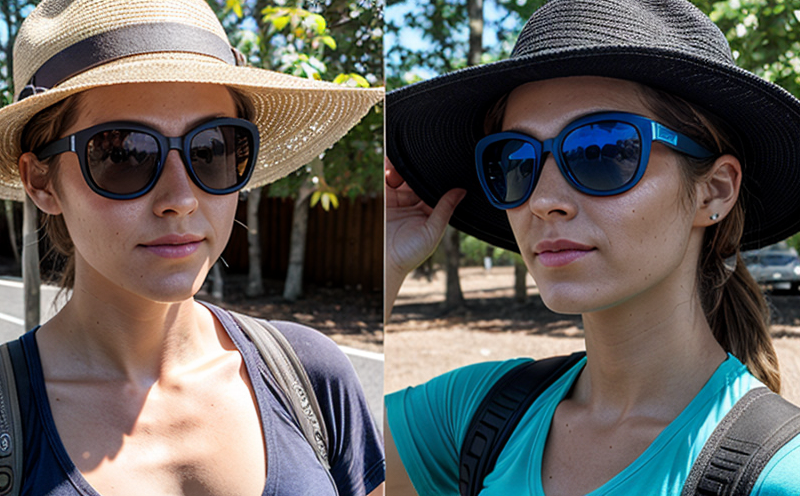Evaluation of babywear fabrics for UV protection
Ensuring the safety and well-being of babies is a paramount concern in the textile industry. Babywear, being one of the most crucial garments that come into prolonged contact with delicate skin, must offer robust protection against harmful ultraviolet (UV) rays. This service focuses on evaluating fabrics used in babywear to determine their effectiveness in blocking UV radiation. The goal is not only to meet but exceed international standards for UV protection.
The evaluation process involves a series of tests designed to assess the ability of fabrics to block UVB and UVA rays, which are responsible for causing sunburns and premature skin aging. These tests are critical in safeguarding babies from the harmful effects of prolonged exposure to sunlight, especially during their early years when their skin is more susceptible to damage.
The first step in this evaluation is proper specimen preparation. The fabric samples used must accurately represent the actual conditions under which they will be worn. This includes cutting representative pieces that mimic how a garment would be manufactured and ensuring that any necessary pre-treatments are applied, such as washing or ironing.
Once prepared, the fabrics undergo rigorous testing using specialized equipment designed to simulate real-world environmental conditions. Instruments like spectrophotometers measure the amount of UV light transmitted through different layers of fabric. This data is crucial in determining not only how well a single layer of fabric protects but also how effective multi-layered garments can be.
Another important aspect of this service is understanding the specific requirements set by international standards such as ISO 12727:2004 and ASTM D7653-18. These guidelines provide comprehensive frameworks that ensure fabrics are evaluated consistently across various regions, enhancing consumer trust and regulatory compliance.
Moreover, the service encompasses a thorough analysis of the fabric’s physical properties beyond just UV protection. Factors like breathability, durability, and colorfastness under repeated washings are also considered to ensure that not only is the baby safe from UV radiation but also that they can enjoy comfort and longevity in their clothing.
The results of these tests provide detailed reports that highlight areas where improvements can be made. For instance, if a particular fabric type performs poorly in blocking UVA rays, recommendations might include adding reflective layers or selecting different materials for future products. This service thus goes beyond mere compliance; it offers valuable insights into enhancing product quality and design.
Finally, the evaluation process ensures that every aspect of the babywear fabric is scrutinized meticulously to deliver optimal protection against UV radiation. By adhering strictly to international standards and employing advanced testing methodologies, this service sets a benchmark for excellence in textile safety and innovation.
Why It Matters
The importance of evaluating babywear fabrics for UV protection cannot be overstated. Babies have thinner, more delicate skin compared to adults, making them particularly vulnerable to the damaging effects of UV radiation. Prolonged exposure can lead to sunburns and increase the risk of developing skin conditions later in life.
International standards like ISO 12727:2004 provide a standardized approach that ensures consistent and reliable evaluation methods, which is essential for both manufacturers and consumers. Meeting these standards not only enhances product safety but also builds trust among parents who are looking for safe clothing options for their children.
Moreover, the evaluation process helps in identifying gaps or deficiencies in current fabric designs, allowing for continuous improvement and innovation. By understanding how different fabrics perform under various conditions, manufacturers can experiment with new materials and techniques to create more effective protection solutions.
The service also plays a crucial role in maintaining regulatory compliance across different regions, ensuring that products meet the stringent requirements set by authorities worldwide. This not only protects consumers but also supports fair competition within the industry.
Eurolab Advantages
As a leading laboratory specializing in textile testing, Eurolab offers unparalleled expertise and state-of-the-art facilities to evaluate babywear fabrics for UV protection. Our team of highly skilled professionals brings extensive experience in the field, ensuring accurate and reliable results.
We use cutting-edge technology such as spectrophotometers that provide precise measurements of UV transmission through fabric samples. This allows us to offer detailed insights into how well different materials perform under various conditions. Our facilities are equipped with all necessary instruments and software required for comprehensive evaluation, including real-time data analysis capabilities.
Our commitment to quality extends beyond just technology; it encompasses a rigorous quality assurance process that guarantees the consistency of our results. We adhere strictly to international standards such as ISO 12727:2004 and ASTM D7653-18, ensuring that every evaluation adheres to recognized benchmarks.
At Eurolab, we pride ourselves on providing not just compliance but also valuable insights into fabric performance. Our reports go beyond mere numbers; they provide actionable recommendations for improving product design and functionality. This helps manufacturers stay ahead of industry trends and meet the evolving needs of consumers.
International Acceptance and Recognition
The standards set by international organizations such as ISO (International Organization for Standardization) and ASTM (American Society for Testing and Materials) are widely recognized across the globe. These standards provide a framework that ensures consistency in testing methods, which is crucial for maintaining high-quality products.
ISO 12727:2004 specifically addresses the evaluation of fabrics used in clothing intended to protect against UV radiation. This standard outlines detailed procedures and criteria for conducting tests on fabric samples, ensuring that all evaluations are conducted under controlled conditions. Compliance with these standards enhances the credibility and reliability of our services.
ASTM D7653-18, another widely accepted standard, provides additional insights into the testing methodologies used to assess UV protection in textiles. Together, these standards form a robust foundation for evaluating babywear fabrics effectively.
The recognition and acceptance of our services by leading international bodies further solidify our reputation as a trusted partner in textile quality assurance. This global acceptance not only enhances our credibility but also supports the expansion of our client base across different regions.





